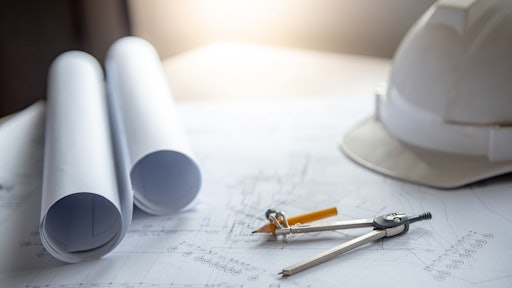It’s no secret that in the construction industry, cash flow is king. Even companies that are profitable on paper can be crippled if they can’t collect payments promptly. It’s an industry-wide problem, and it affects subcontractors, residential contractors and commercial and industrial construction businesses.
Let’s take a look at some of the top causes of payment delays in construction and how companies can be proactive about mitigating them.
1. Communication Errors
Probably the No. 1 cause of payment issues in construction – across all sectors of the industry and in every part of the world – is poor communication.
Whether it’s poorly written terms and conditions on your quotes that are ambiguous and hard to enforce or price increases that are not properly communicated, they all mean you will have delays getting paid for your work.
To avoid communication errors, have your contracts and terms of quotation professionally drafted to ensure they are clear and enforceable. Make sure that all communication with your customers is done in writing – even if it’s just an email. That way, if there’s a miscommunication or dispute, you have something in writing to refer back to.
2. Incorrect Billing
Many construction companies still price their jobs as lump sum bids. However, that makes it a lot harder to adjust your billing when there are quantity or scope changes. This could result in over or under billing of customers, particularly if you have not kept very careful records of everything that was done on every site.
One of the easiest ways to make your billing more accurate is to base your quotes on unit rates and line items. This means that when something changes, all you have to do is adjust the quantities to recalculate your invoice.
3. Change Order Disputes
There might be a construction project that went exactly according to specification with no changes along the way. We just haven’t ever seen one, and there’s a good chance you haven’t either.
Changes are part of the process of any construction project, but every change comes with cost and time implications. It’s important that you get your clients’ permission to proceed with changes before doing the work, or you could face disputes down the line.
Make sure that your foremen, estimators and project managers have a detailed process for dealing with change orders. Get your customers’ approval of the changes and any associated costs and time implications in writing. Never start any additional work, no matter how insignificant it may seem, until you have written authorization to proceed.
If you start work on changes before they are approved, you might not be able to collect the money for them when you need to.
4. Billing Cycle Delays
In the commercial construction world, most general contractors and client representatives require progress billing to be submitted by a fixed date every month. If a residential project is being progress billed, or if you are submitting draws to a finance company, there will probably be a date that you need to submit your documentation by too.
If you miss the due date for progress billing, your invoice will not be captured in that month’s billing cycle. That means that instead of waiting 30 days for your payment, you might have to wait 60 days.
To avoid billing cycle delays, always ensure that you know exactly when your progress billing or draws are due and submit them on time. Make sure you also submit any accompanying documentation that is required by your client or their representative. This might include things like statutory declarations or signed change orders.
5. Holdbacks
Sometimes, construction projects include a holdback clause. This is a percentage of each progress bill that is withheld by the client or their representative, up to a predetermined value for the project. So, a contract might state that the holdback will be 5% per invoice.
Usually, holdbacks are held by the customer until the project is substantially completed, and it’s a method of ensuring that contractors complete the job and any remedial work that might be required.
Holdbacks are usually released once your client has signed substantial completion and you are addressing any final work requirements. However, sometimes, clients will have a list of closeout requirements, which could include final drawings or other kinds of documentation. In those cases, you will not be paid your holdback until all the closeout requirements are met.
It’s always a good idea to read every construction project contract very carefully if you are given one by a client. These will usually include details about how much holdback will be retained on every invoice, as well as when and how it will be released. Many contractors add a percentage to their pricing to allow for the delay in receiving their holdback.
6. Non Payment and Liens
When it comes to construction payment issues, non-payment is probably the worst-case scenario. Sometimes, customers simply run out of money. Other times, they are just very slow payers who try to delay meeting their obligations as long as possible.
If your customer can’t or won’t pay, you might have to take a lien on their property as a method of ensuring that you can get paid. This is one of the legal remedies you might have at your disposal if this should ever happen to you. Of course, it’s always better to ensure that your customer has good credit before you start working for them, but even clients that are financially stable right now could run into trouble at a later stage.
Getting a lien is a legal process. You will need to have the client’s full name and contact details, the details of the property you plan to lien, and possibly other information. There is also a time limit on getting a lien, so if your customer has not paid you when they should have and are avoiding contact, you should not wait to explore this option.
A Complex Part of the Construction Process
The truth is that construction accounting and contract administration is a very complex, specialized part of running a construction business. The larger and more successful your business becomes, the more important these things will become.
If you’re not well versed in this part of the construction business, it’s a good idea to take some courses to learn more about how it all works. In this case, you really do want to have strategies and processes to minimize problems and address them quickly when they happen.
Good construction management and accounting software can also help to ensure that your team stays on top of financial matters, which should help to limit problems.
Finally, as your business grows, it might be wise to hire accounting and project management professionals who can ensure that you dot all the I’s and cross all the t’s.




Comment (0)